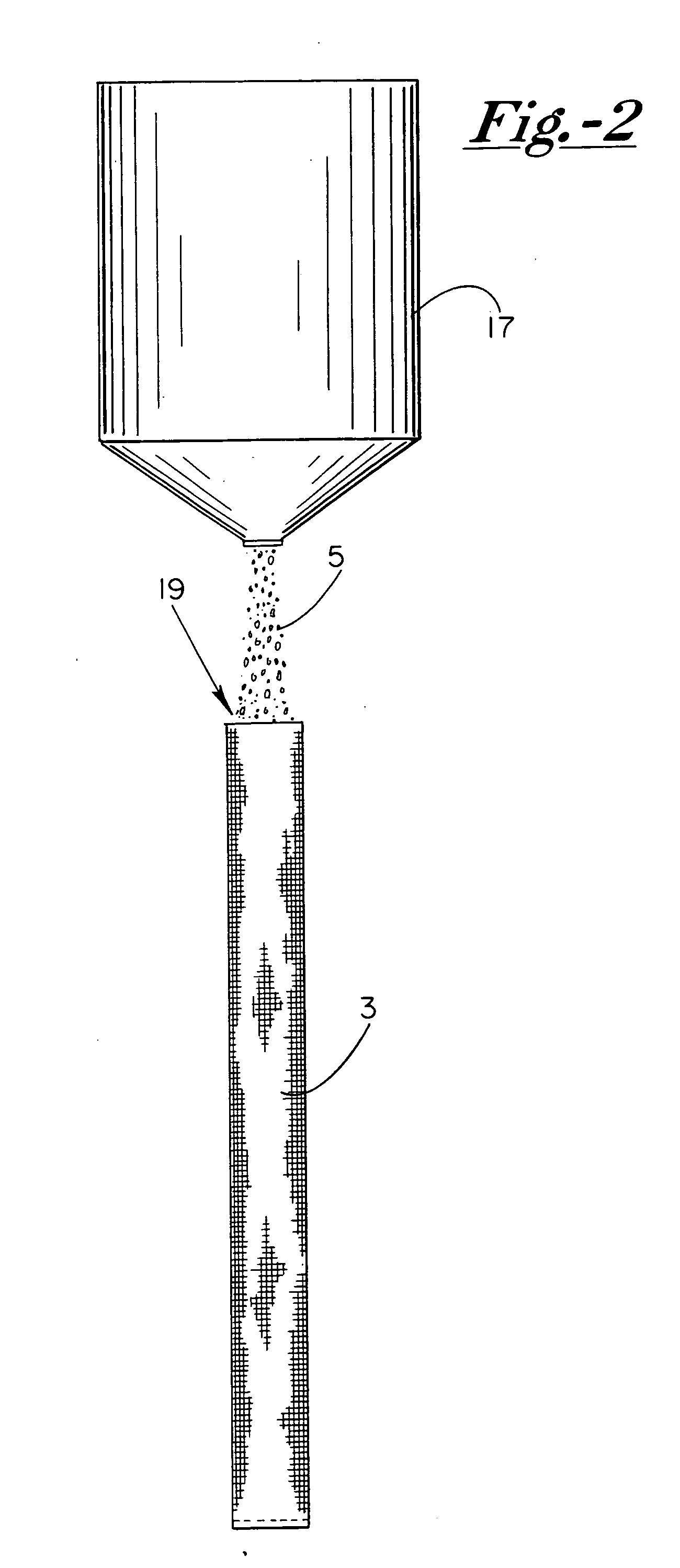Ice dam removal system
a technology of ice dams and ice dams, which is applied in the field of ice dam removal systems, can solve the problems of forming ice dams, significant damage to inner wall structures, and damage to multiplying, and achieves the effect of fast action
- Summary
- Abstract
- Description
- Claims
- Application Information
AI Technical Summary
Benefits of technology
Problems solved by technology
Method used
Image
Examples
Embodiment Construction
[0020] As shown in FIG. 1, our improved ice dam removal system 1 is comprised generally of an outer porous container 3 that is preferably constructed as an elongated tubular structure having a closed interior that encases our improved deicing mixture 5, which will be described in more detail hereafter. As seen, the porous container 3 is constructed of a flexible cotton or polymeric woven fabric which is designed such that the interstices defined by the interwoven strands or yarn are sufficiently small to retain the granular deicing mixture 5 therein, yet sufficiently sized to accommodate and allow water to flow freely therethrough.
[0021] In the preferred embodiment, the fabric utilized for container 3 is composed of high-tenacity monofilament polypropylene yarns, which are substantially inert to biological degradation and resist naturally encountered chemicals, alkalines, and acids. Such polypropylene yarns are woven into a stable network such that the yarns retain their relative p...
PUM
| Property | Measurement | Unit |
|---|---|---|
| diameter | aaaaa | aaaaa |
| length | aaaaa | aaaaa |
| length | aaaaa | aaaaa |
Abstract
Description
Claims
Application Information
 Login to View More
Login to View More - R&D
- Intellectual Property
- Life Sciences
- Materials
- Tech Scout
- Unparalleled Data Quality
- Higher Quality Content
- 60% Fewer Hallucinations
Browse by: Latest US Patents, China's latest patents, Technical Efficacy Thesaurus, Application Domain, Technology Topic, Popular Technical Reports.
© 2025 PatSnap. All rights reserved.Legal|Privacy policy|Modern Slavery Act Transparency Statement|Sitemap|About US| Contact US: help@patsnap.com



